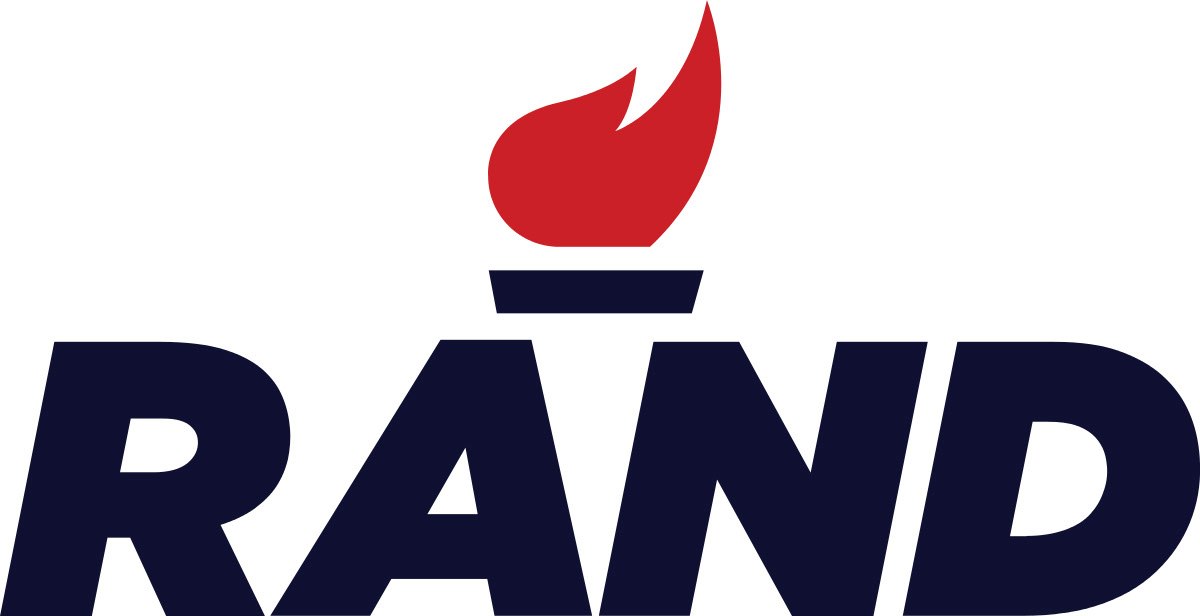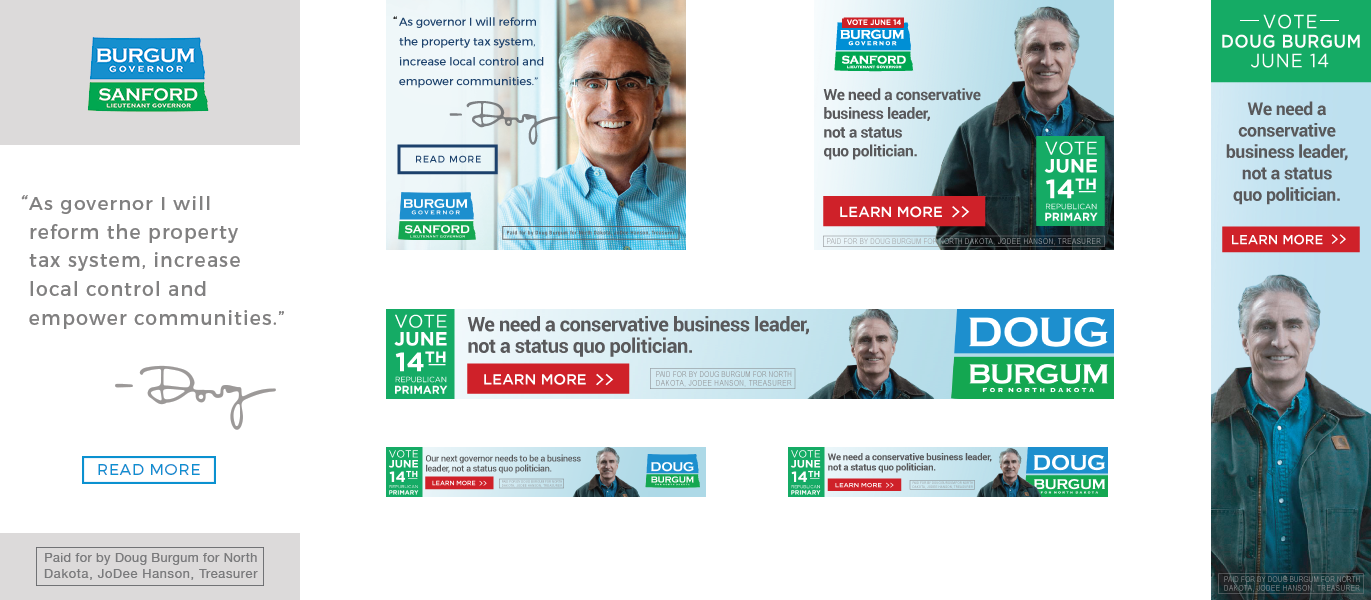

Case Study
PLACEHOLDER
PLACEHOLDER
Doug Burgum’s campaign presented interesting challenges and serves as a fascinating case study for the role of digital and data in the 2016 election cycle. Doug was a conservative business leader with a technology background — a political outsider pitted against the party standard bearer — a 40 year Republican elected official and current two term statewide office holder, who was victorious in his last two elections with almost 75 percent of the vote.
When Doug entered the race in February the campaign began at a 49 point polling deficit and was dealt a blow in April when Doug’s opponent received the official endorsement and support of North Dakota’s Republican Party.
North Dakota columnist and radio host Mike McFeeley framed the race nicely in a piece written just before Election Day. According to McFeeley, “…if Burgum pulls the upset, it’d be a victory for the ages. It’d also be a defeat of epic proportions for Stenehjem, who’d be left to answer how he blew a 49-point lead.”
That is exactly what happened. Also, Burgum won by 19 points.
HOW IT WORKED FOR BURGUM
The Burgum campaign employed an aggressive, calculated, and coordinated voter contact effort across all fronts. Doug himself, along with his business inner circle, strategist and campaign manager committed to a campaign culture that fostered synchronization between voter data, political data, technology, and messaging distribution channels.
As with any campaign, message delivery channels need a winning message. Message development is often simplified by the strength of a candidate’s personal narrative — fortunately, this is the hand the campaign was dealt with Doug Burgum.
Early on, the campaign committed to highlighting Doug’s background as a political outsider, a successful entrepreneur, and a conservative business leader with a history, connection, and commitment to North Dakota. The election was framed as a choice between a longtime elected official — the status quo — and a new type of leader for a changing economy in Doug Burgum.
For this effort we tailored our digital programs to accomplish the following objectives:
- Support and enhance traditional offline messaging programs via digital channels
- Organize data and messaging to communicate a unique storyline over digital channels with data tracking and aggregation tools.
- Leverage all past offline and online data to optimize efficiency during our final GOTV program.
USING DATA FEEDBACK TO INFORM MESSAGING
Early benchmark polling uncovered advantages in pairing various geographic, demographic, and messaging tracks — and we structured our delivery paths accordingly.
The first step in this process was entirely based on something simple, but often overlooked — using the same data.
AdVictory first created broader models of actionable voter segments for maximum reach into the campaign’s key universes. To go further, we also build engagement audiences based on in-flight data, as well as segmented audience retargeting pools based on user and landing page paths. Using exclusion audiences, we also programmatically delivered key messaging creative to high-value targets who had not yet exhibited engagement. To top it off, landing pages were also organized landing pages and tracking tags to reach targets on platforms based on content they engaged with somewhere else.
OFFLINE LEARNED TO LOVE ONLINE
In traditional campaign circles the importance of this point is often overlooked by those pitting digital targeting against conventional distribution channels like TV, mail, and phones. Rather than creating an environment where these tools are competing with digital for “air in the room,” smart campaigns are recognizing an opportunity to diminish inherent inefficiencies across channels by allowing digital to enhance other types of voter contact programs.
The first step in this process was entirely based on something simple, but often overlooked — using the same data.
The campaign smartly invested in base i360 data from the start — the leading provider of voter data and voter models. The campaign used this data to develop audiences for targeted TV, paid live phone, mail, and volunteer phone/door programs. Accordingly, our digital approach also leveraged integrations between actionable i360 audiences and ad delivery platforms.
Too often, digital strategies lazily rely on existing audience segments inherent to ad platforms, rather than taking steps to synchronize data between offline and online programs. This unification of data sources is necessary to diminish mismatches in targeting when using a multifaceted approach to voter contact. To this end, AdVictory used a combindation of audience matching technologies to meticulously match micro-segments of voter universes for hyper-targeted digital delivery.
With this in mind, AdVictory developed programs to:
- Supplement TV messaging with added reach and frequency, targeted to actionable i360 audience segments
- Match offline mail universes to mobile device IDs, household IPs, and direct Facebook profiles to enhance the campaign’s vote-by-mail chase program
- Leverage integrations between AdVictory and the campaign’s live phone vendor, Victory Phones Live to ingest data from phone programs to activate addressable digital profiles

TURNING OUT THE TARGETS
To round out our voter contact strategy, our GOTV program also heavily relied on activating offline ID work and modeling to inform targeting decisions. Direct delivery to audiences of supporters and undecided voters was amplified on platforms like Facebook, or via matched IP household and mobile devices — person-based targeting from hard offline ID work. High value targets were also matched and segmented across platforms to enhance options for reach and frequency.
To reach the most voters possible, AdVictory went above and beyond to:
- Geofence delivery zones around target polling locations on Election Day
- Suppress known supporters of our opponent, as well as voters who had voted early or returned absentee ballots
CONCLUSION
Burgum ran an “extensive TV and online advertising campaign,” but few knew the extent the campaign went to structure a true omni-channel marketing approach to delivering their message — and the key role digital and data played in that effort.
The Associated Press pointed out that Burgum’s “barrage of ads is especially relevant online,” and while our digital efforts might have been more aggressive than voters in North Dakota had seen before, in a spirited primary, they were also heavily targeted and orchestrated to flow with the rest of the campaign messaging channels in some exciting ways made possible through data coordination and activation.
